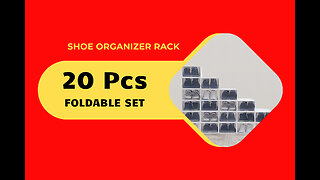"Mastering the Art of Garment Packing: Ensuring Protection, Presentation, and Customer Satisfaction"
Garment packing is an essential part of the clothing manufacturing and distribution process. Proper packing ensures that the garments are protected during transportation and storage, maintaining their quality until they reach the end customer. Here is a general description of garment packing:
Packing Materials:
Boxes/Cartons:
Used for packing multiple garments of similar types.
Available in various sizes depending on the type and quantity of garments.
Corrugated cardboard boxes are common due to their strength and durability.
Polybags:
Individual garments are often packed in polybags.
Protects from dust, moisture, and other external elements.
Transparent polybags allow visibility of the garment without opening.
Tissue Paper:
Used for wrapping delicate garments to prevent wrinkles and creases.
Adds a layer of protection and a touch of elegance, especially for high-end clothing.
Labels and Tags:
Include product information, size, price, barcode, and care instructions.
Attached to garments or boxes for easy identification.
Packing Process:
Folding:
Garments are neatly folded to minimize wrinkles and save space.
Folding techniques vary based on garment type (shirts, pants, dresses, etc.).
Polybagging:
Each garment is placed into a polybag, ensuring it is sealed properly.
Size stickers or labels are added on the outside for easy identification.
Boxing/Carton Packing:
Similar garments are grouped together in boxes.
Boxes are filled efficiently to prevent items from shifting during transit.
Fragile items may have additional padding or dividers.
Sealing:
Boxes are securely sealed using tape to prevent accidental opening.
Ensure proper labeling on the outside of the box for easy sorting.
Documentation:
Packing list or invoice detailing the contents of each box.
Shipping labels with addresses and tracking information.
Palletizing (For Bulk Shipping):
In cases of large shipments, boxes are stacked on pallets.
Pallets are shrink-wrapped to secure the boxes together for easy handling.
Special Considerations:
Seasonal Packaging: Some garments might require specific packaging for seasonal needs, like waterproofing for rainy seasons or extra insulation for winter wear.
Environmental Considerations: Increasingly, eco-friendly packaging options are being used, such as recycled materials or biodegradable polybags.
Branding and Presentation: Packaging can also serve as a marketing tool, with branded boxes or special designs that enhance the customer's unboxing experience.
Regulatory Compliance: Some countries have specific regulations regarding garment packaging, such as safety standards or labeling requirements.
Proper garment packing not only protects the products but also plays a significant role in customer satisfaction. A well-packed garment not only arrives safely but also presents itself well, enhancing the overall brand image.
-
 2:08:39
2:08:39
Sewing Report
2 months agoWhat's Happening to Fabric Stores???
573 -
 3:06
3:06
ISF Expedite
2 months agoGuide to Smooth Customs Clearance for Textiles
3 -
 7:44
7:44
ISF Solution
1 month agoNavigating ISF Compliance in the Fashion Industry
8 -
 1:06
1:06
Shopify Print-On-Demand Rumble channel
1 month ago!! 20pcs Shoe Organizer Foldable Rack Stack Storage Box Set !!
12 -
 4:00
4:00
ISF Depot
1 month agoNavigating ISF Filing for Fabrics: Tips and Tricks for Smooth Customs Clearance
6 -
 1:49
1:49
Backroad Reviews
2 months agoThe Importance of Proper Packaging in Homesteading
1212 -
 35:09
35:09
Sewing Report
2 months agoIs Backstitch the Next "Big Thing" in Sewing?
257 -
 2:07:22
2:07:22
Sewing Report
1 month agoIs Influencer Marketing Ruining Sewing?
5021 -
 4:15
4:15
Spencer Does Reviews
6 months agoPrepper & Fancy Dinner Must Have | Compressed Towel Tablets
7 -
 4:07
4:07
ISF Template
1 month agoGuide to Importing Clothing and Fashion Accessories
1